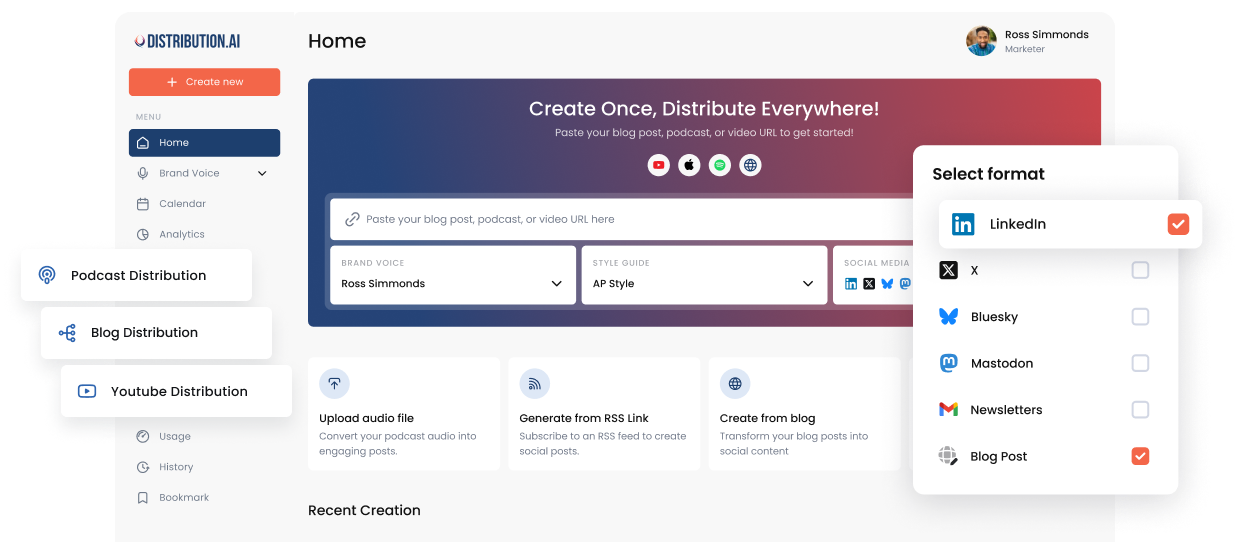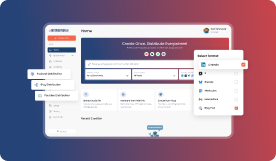Best Time to Post on Twitter (X): An Industry-Specific Guide for 2025
Learn the best times to post on X based on your industry, audience, and goals. Get our weekly schedule guide.
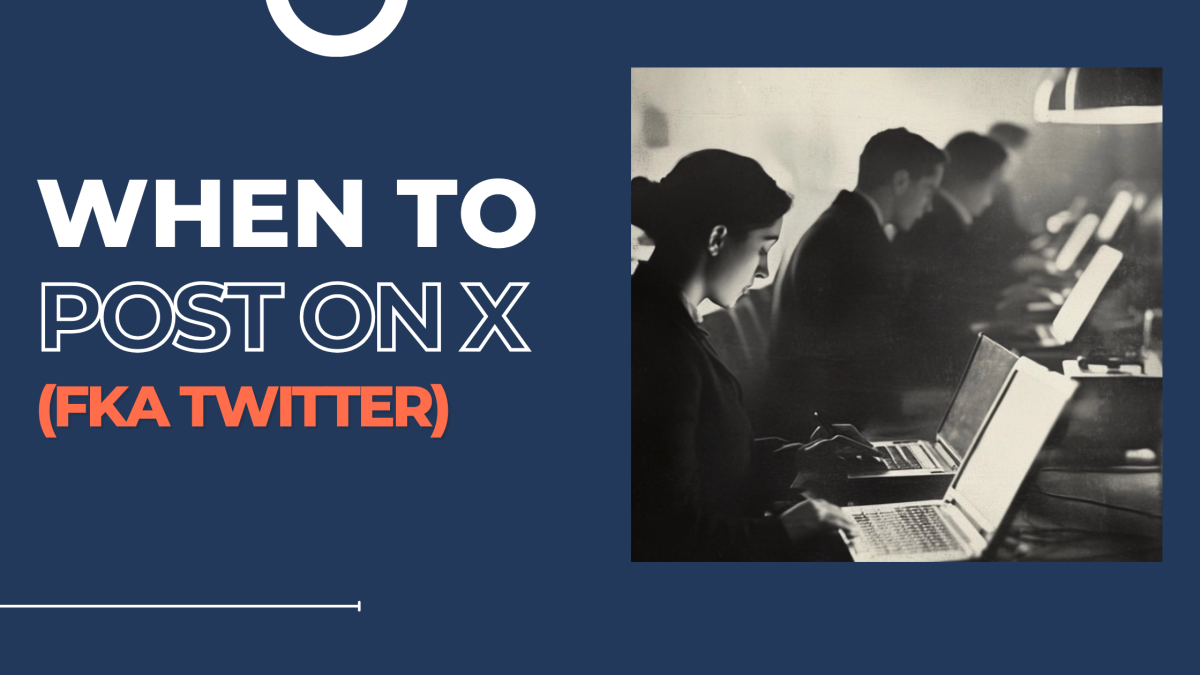
X (formerly Twitter) is one of the noisiest platforms out there. News breaks every second, people jump in with hot takes, and your post is just one of thousands flying through the feed.
That’s why timing matters more than most people think.
The algorithm favors posts that get early engagement. If people start liking, replying to, or retweeting soon after you post, the platform starts pushing it out to more users.
This creates a snowball effect.
More engagement leads to more visibility, and that loop can turn a regular post into one that reaches thousands, sometimes even more.
And this kind of engagement scaling (a positive feedback loop, often the biggest contributor to a post going viral) usually happens when your audience is online and in the mood to engage.
This is the key to visibility on Twitter, both for individual posts and your entire account.
To help you find the best time to post on X, we have gone through all the popular guides on the internet, dissected their data and methodologies, and created a condensed, actionable guide for your Twitter strategy.
Why Posting Times Matter on X?
When you post on X has a direct impact on how far your content travels. Here’s why timing matters:
Global usage patterns
- According to DataReportal’s Digital 2025 report, the average user spends 2+ hours daily on social platforms.
- The heaviest activity occurs during commute windows (8–10 AM), lunch breaks (12–2 PM), and evening hours (6–9 PM).
Morning, midday, and afternoon spikes
- Around 12% of users generally use X for news consumption—stay on top of trends, get updates in real time, and stay informed about trending topics.
- If you post between 9 AM to 3 PM, your content is most likely to get noticed. That’s because most professionals would tune into X from early and mid-mornings through afternoons to stay updated on industry/brand news.
High engagement through smart scheduling
- HubSpot’s 2025 State of Marketing highlights that posts shared in peak activity slots get 1.5 to 2 times more interactions in the first hour compared to off-peak posts.
- So, if you want your posts to perform well, you need to publish them in the peak activity hours. Early engagement is crucial, as it signals to algorithms to amplify reach.
Want to learn more about content marketing strategy? Check out this video
When is the Best Time to Post on Twitter?
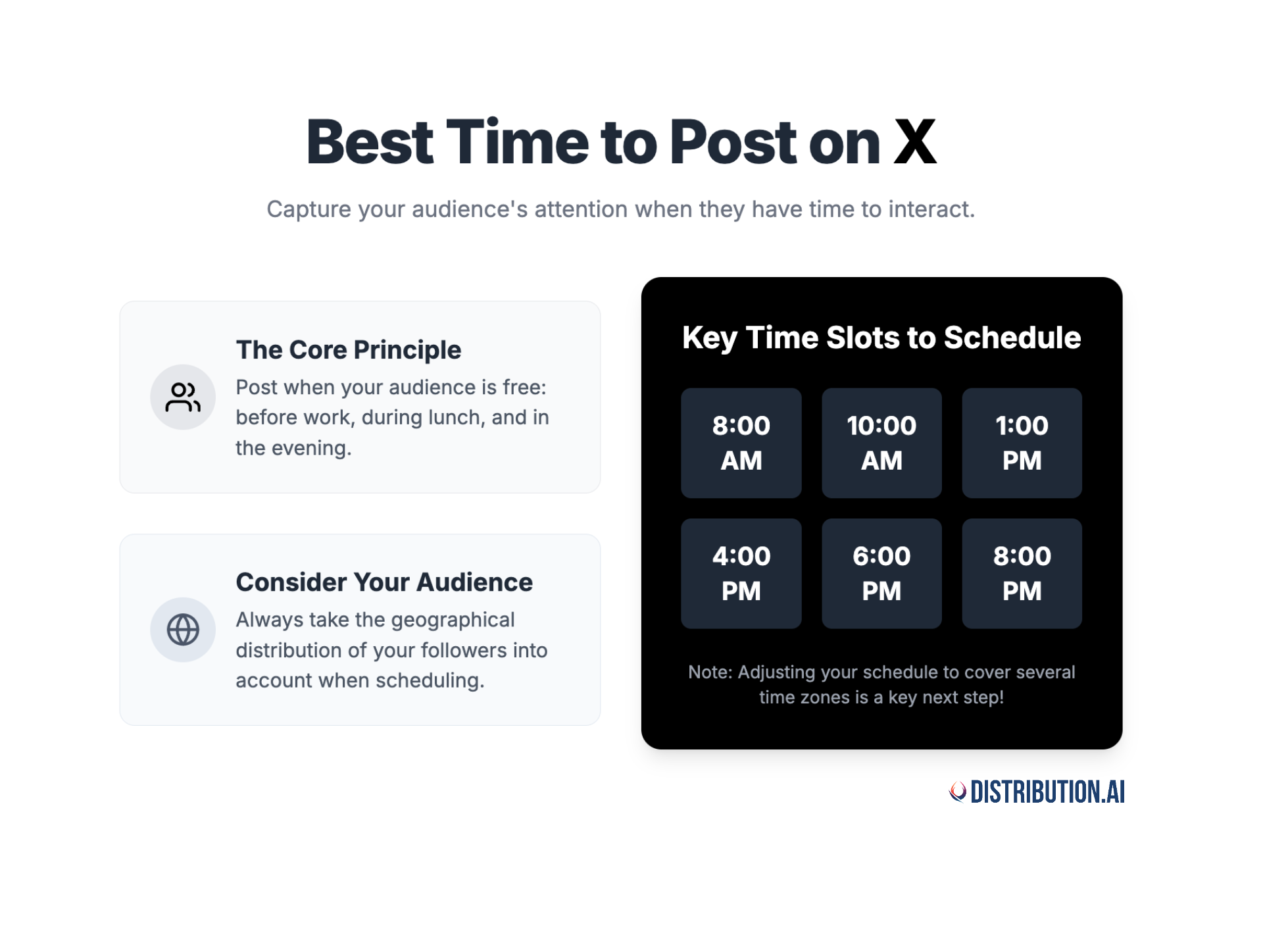
The best time to post on X (Twitter) is early and mid-mornings to afternoons. Late evenings are also considered peak times for engagement.
Think of it like this:
- Users consume news on X during the early morning hours, just before they leave for work. They are also likely to scroll through their feeds during their commute.
- Furthermore, after logging off, there is a high chance that users may resume scrolling through X. Hence, late evenings are also considered peak hours for engagement. However, your posts should be live before your audience gets occupied with other topics.
When we searched Reddit for real insights, we found several time slots. While some said Monday to Thursday between 9 AM and 3 PM, others suggested 9 AM—11 AM and 1 PM—3 PM.
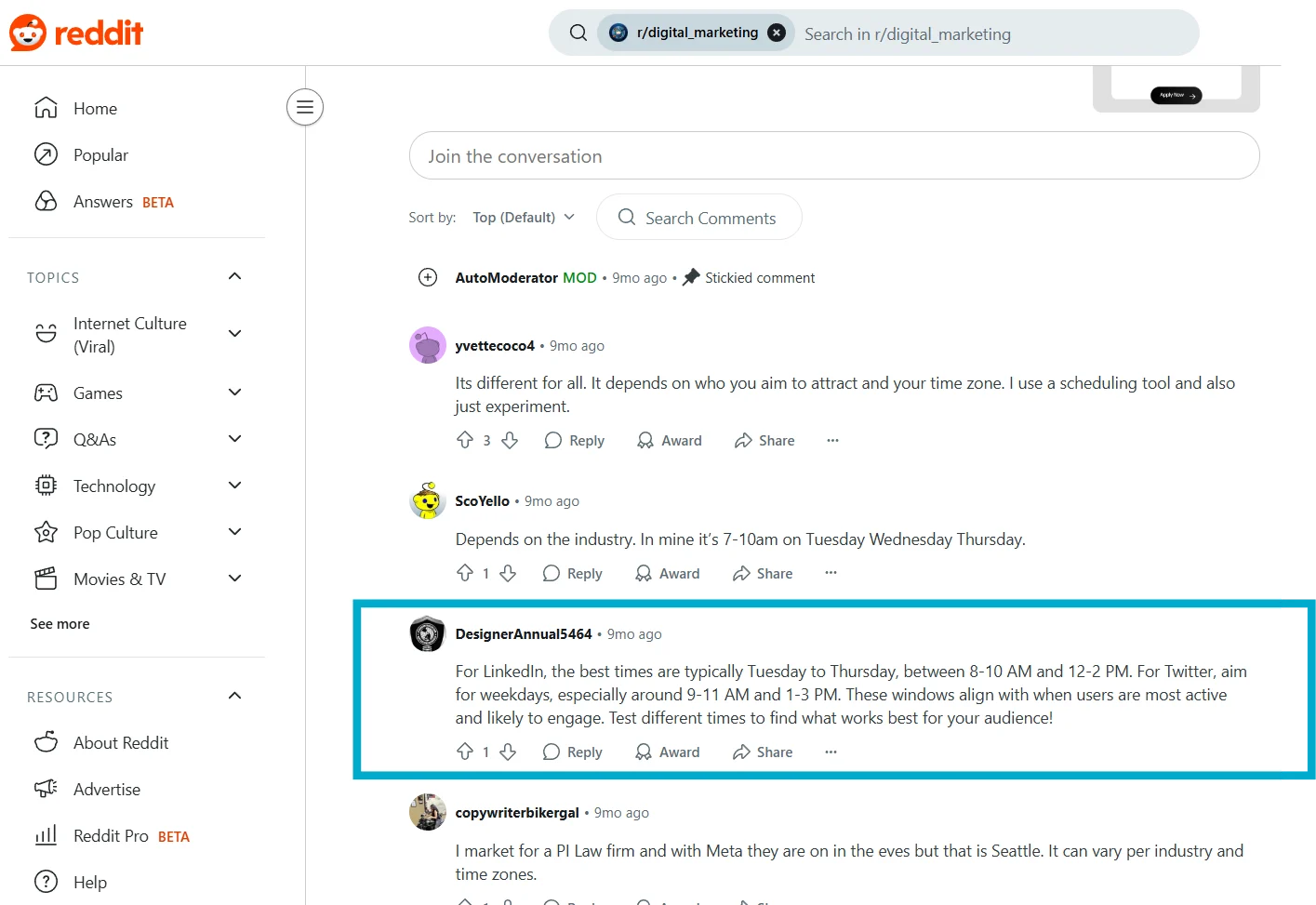
All in all, you can use the following slots to schedule posts: 8:00 AM—10:00 AM, 1:00 PM—4:00 PM, and 6:00 PM—8:00 PM.
Plus, take the geographical distribution of your audience into account when scheduling posts.
Best Time to Post on Twitter For Each Day of the Week
The best time to post on Twitter isn’t the same every day. Audience habits shift depending on the day of the week, time zone, and even their mid-week energy levels.
To get higher engagement, your posting schedule should follow these real-time shifts.
We’ve broken it down by day to help you find the ideal time to post across the week.
Use this guide to build a data-driven social media strategy, boost your engagement rates, and stop wasting great content on the wrong time slots.
| Day | Best Time Slots | Content Strategy |
|---|---|---|
| Monday | 8 am - 1 pm (Peak: 8 am to 10 am) | Start the week strong. Post valuable insights, news, and thought-starters. |
| Tuesday | 8 am - 3 pm (Peak: 9 am to 2 pm) | Highest engagement day. Share your most important content. |
| Wednesday | 8 am - 3 pm (Peak: 9 am to 2 pm) | Continue with high-value posts and questions to drive replies. |
| Thursday | 8 am - 3 pm (Peak: 9 am to 2 pm) | Last day for peak work-week focus. Ideal for cross-posts. |
| Friday | 9 am - 1 pm (Engagement drops after lunch) | Shift to lighter, conversational, or community-focused content. |
| Weekend | 9 am - 12 pm & 6 pm - 8 pm | Audience is relaxed. Good for testing content or repurposing posts. |
Best Time to Post on Monday: 8 AM – 1 PM
Monday morning is when routines restart. People are catching up on news, scanning Twitter for trending topics, and settling into the week.
It’s a good time to reach your audience when they’re fresh, alert, and still easing into work.
You’ll see the most engagement in the early morning hours, especially between 8 AM and 10 AM.
A second spike usually happens after the lunch break, around 2 PM to 4 PM.
This is the perfect time to post new content that offers value. Use hashtags, helpful insights, or thought-starters that set the tone for the rest of the week.
Best Time to Post on Tuesday, Wednesday, and Thursday: 8 AM – 3 PM
Tuesday, Wednesday, and Thursday consistently show the highest engagement rates on the platform.
Mid-week energy is high, people are in rhythm, and your tweets don’t compete with the distractions of Monday catch-up or Friday wind-down.
If you’re planning to post something important—like a product launch, LinkedIn cross-post, or high-stakes thread—this is the best time to tweet it.
The best posting times fall between 9 AM and 2 PM.
Your social media content here should aim for maximum engagement: informative threads, reply-worthy posts, and anything that could get retweets during peak hours.
Best Time to Post on Friday: 9 AM – 1 PM
On Fridays, the collective mood begins to shift.
Engagement remains high in the morning, but it tends to drop off significantly after lunch as people transition into “weekend mode”.
The mindset becomes lighter and less focused on work.
This is a great time for content that is more conversational, entertaining, or community-focused.
Morning windows, such as 9 a.m. to 12 p.m., are consistently recommended for capturing the last wave of weekday attention.
After 1 p.m., you are competing with weekend plans, and visibility typically declines.
Best Time to Post on Saturday and Sunday: 9 AM – 12 PM and Evenings
Weekends bring different engagement times and a different audience mindset. People aren’t working, so their X habits become more casual and unpredictable.
Engagement tends to peak in two windows: late morning (around 9 AM to 12 PM) and early evening (6 PM to 8 PM).
Saturday often has the most consistent activity out of the two. It offers a wider time frame from early morning to early evening, making it a good time to post, repurpose existing content, or test different types of content with a relaxed audience.
Best Time to Post on Twitter (Industry-Wise Breakdown)
The right time to post doesn’t just depend on the day. It depends on who you’re talking to.
Audience activity on Twitter varies wildly across industries.
B2B users log in during work hours. Food and media audiences show up when they’re hungry or winding down. Some scroll during lunch, others late at night.
This is why tweet timing should follow industry behavior, not just general best practices.
Here’s a breakdown of when different types of brands see high engagement, and what kind of content works best in those time slots.
In B2B, Tech, and Finance? Stick to Work Hours
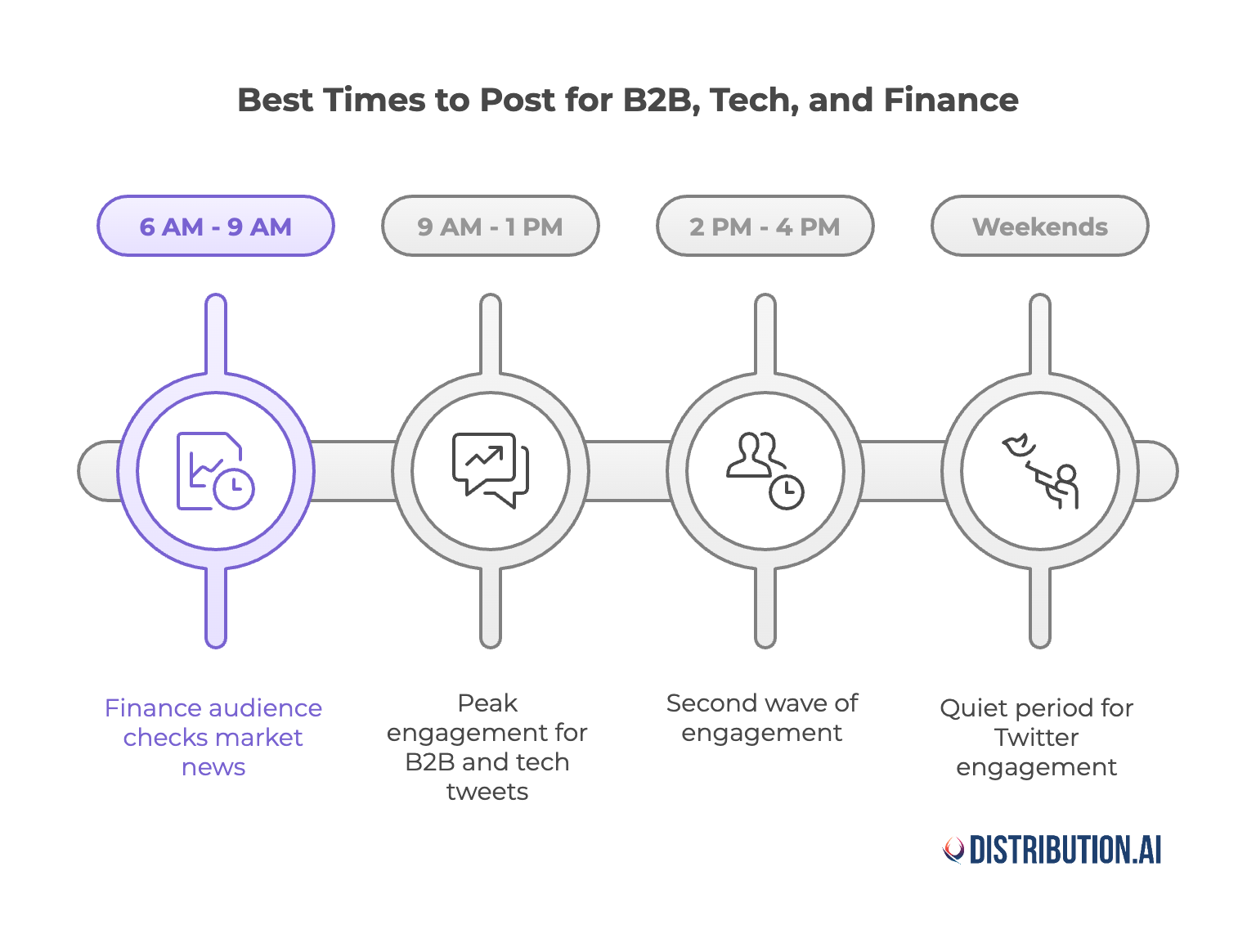
Business professionals tend to check Twitter during short breaks in their day. This usually happens between meetings or while they’re catching up on industry news.
Tweets that go out during work hours tend to see the highest engagement, especially when they carry useful insights or strong opinions.
Post between 9 AM and 1 PM, especially from Tuesday to Thursday. A second wave shows up between 2 PM and 4 PM. That’s when people are more open to scrolling without losing focus.
Finance audiences often check in earlier. Many catch up on market news between 6 AM and 9 AM. These morning hours offer a strong window for visibility if you’re sharing financial updates or timely news.
Weekends are usually quiet. You can still post, but save your evergreen content for those slots.
In B2C, E-commerce, and Retail? Meet Them During Their Breaks
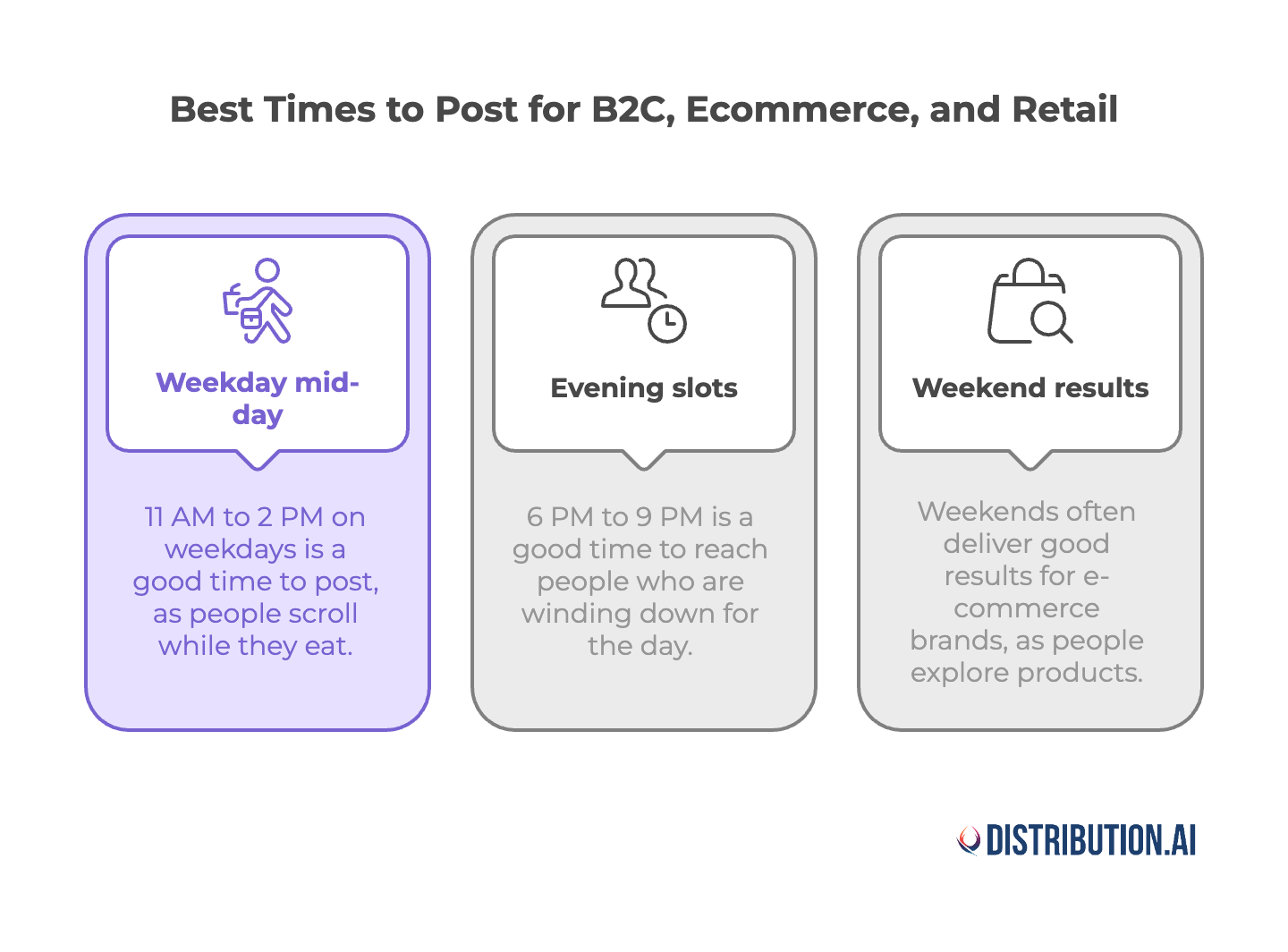
B2C audiences log in for different reasons. Some are browsing. Some are killing time. Others are looking for something to buy.
The sweet spot falls between 11 AM and 2 PM on weekdays. People scroll while they eat or take a quick breather. That’s your chance to grab their attention.
Evening slots work too. Post between 6 PM and 9 PM to reach people who are winding down for the day.
Weekends often deliver good results for e-commerce brands. That’s when people take their time exploring products or responding to content they saved earlier in the week.
In Food and Restaurants? Sync With Hunger Patterns
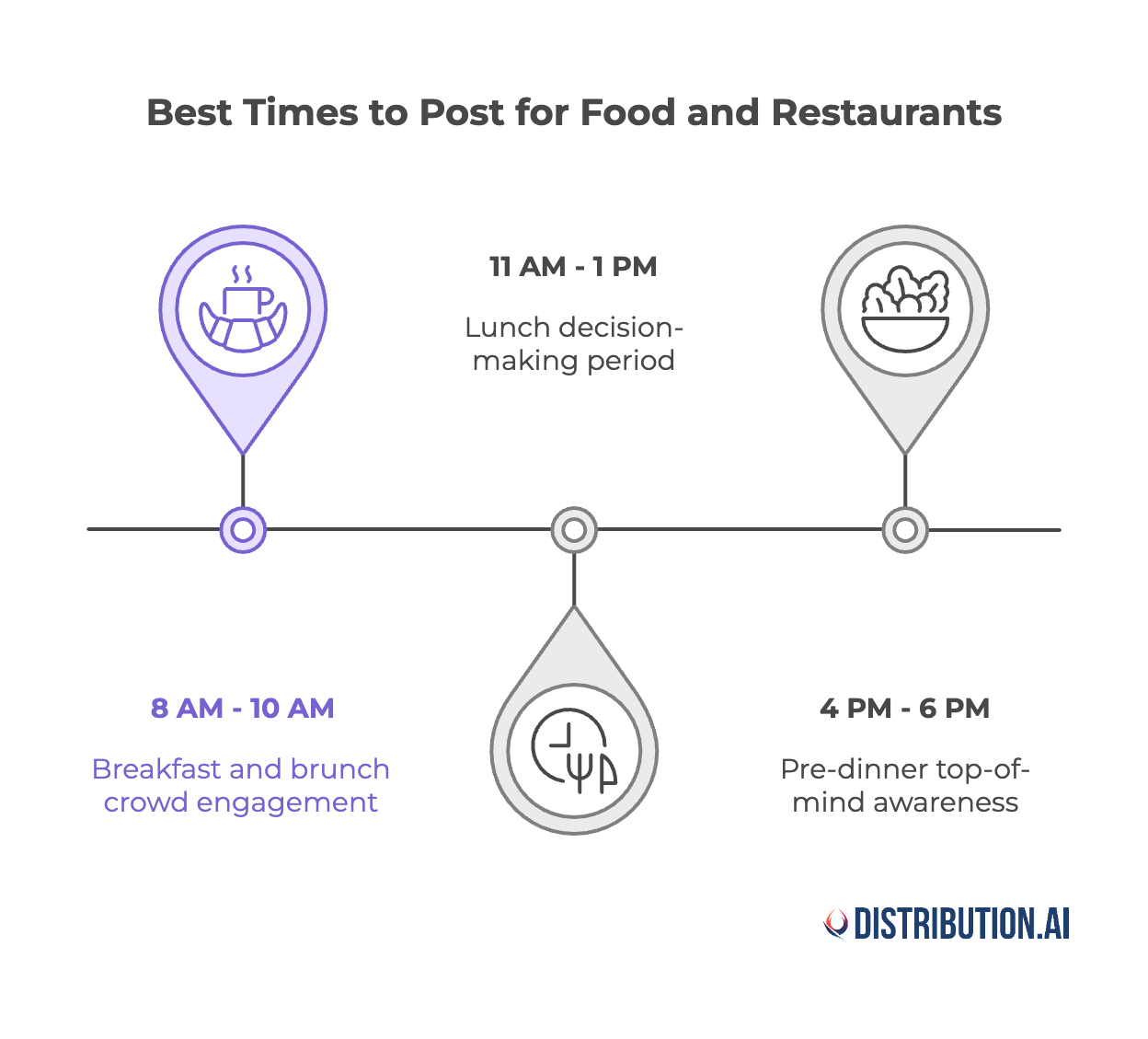
Food content performs best when it shows up at the right moment. Timing your tweets around meals gives you a better chance of landing in front of hungry people, making quick decisions.
Start posting between 8 AM and 10 AM to get the breakfast and brunch crowd. Hit 11 AM and 1 PM to catch lunch decisions. Aim for 4 PM to 6 PM to stay top of mind before dinner.
Midweek tends to perform best. Many users are looking for midweek comfort or something new to try.
Make sure your tweets are paired with visuals. It’s easier to trigger engagement when your content looks good at a glance.
In Entertainment, Sports, and Media? Match the Moment
These industries run on live reactions. Timing matters a lot here because engagement is driven by what’s happening in the world.
Whether it’s a TV release or a game night, your posts need to land when people are most alert and tuned in.
- Entertainment tweets do well between 6 PM and 9 PM. This is when most people are free to relax and catch up on culture.
- Sports content lands best between 7 PM and 10 PM on game nights. On weekends, 3 PM to 6 PM works well.
- News organizations get strong traction between 7 AM and 10 AM. That’s when people scroll for updates as they start their day. This slot is great for reaching commuters and morning readers.
Best Time to Post on Twitter for a Global Audience
When your followers live in different parts of the world, finding a single “best time” to post on Twitter becomes tricky.
A tweet that hits perfectly in New York might be buried by the time people in London wake up. The same goes for your audience in Japan, Sydney, or Dubai.
You’re working across habits, workdays, and cultural rhythms.
Instead of chasing one perfect slot, you need a plan that aligns with your business goals and audience spread. Here’s how to approach it.
1. Anchor and Prioritize
Start by looking at where your most engaged audience lives. Use Twitter Analytics to find your top regions.
Once you know your primary audience, make that your anchor. Schedule your most important tweets, such as launches, campaigns, and high-stakes updates, for peak hours in that time zone.
For example, if most of your followers are in the US, aim for 9 AM to 1 PM Eastern or Pacific Time. That’s when you’re most likely to get early engagement, which boosts your visibility.
2. Stagger and Republish
A good tweet deserves more than one shot. Reshare your top-performing content in different time slots. This helps you reach people who missed it the first time, without starting from scratch.
Let’s say you post at 9 AM Eastern. A few hours later, schedule a slightly tweaked version for 9 AM GMT. Then repeat it again for 9 AM IST or SGT.
This keeps your content fresh and visible across time zones. Just make sure your message fits the audience in each region. Language, tone, and relevance matter as much as timing.
3. Build an Always-On Schedule
Some of your content isn’t tied to news or events. These are your evergreen tweets, the ones that stay relevant for weeks or months.
Use social media automation tools to keep them running in the background. Spread them out throughout the day, and make sure they’re hitting different time zones over time.
With Distribution.ai, you can automate this process and make sure you’re not spamming the same followers again and again.
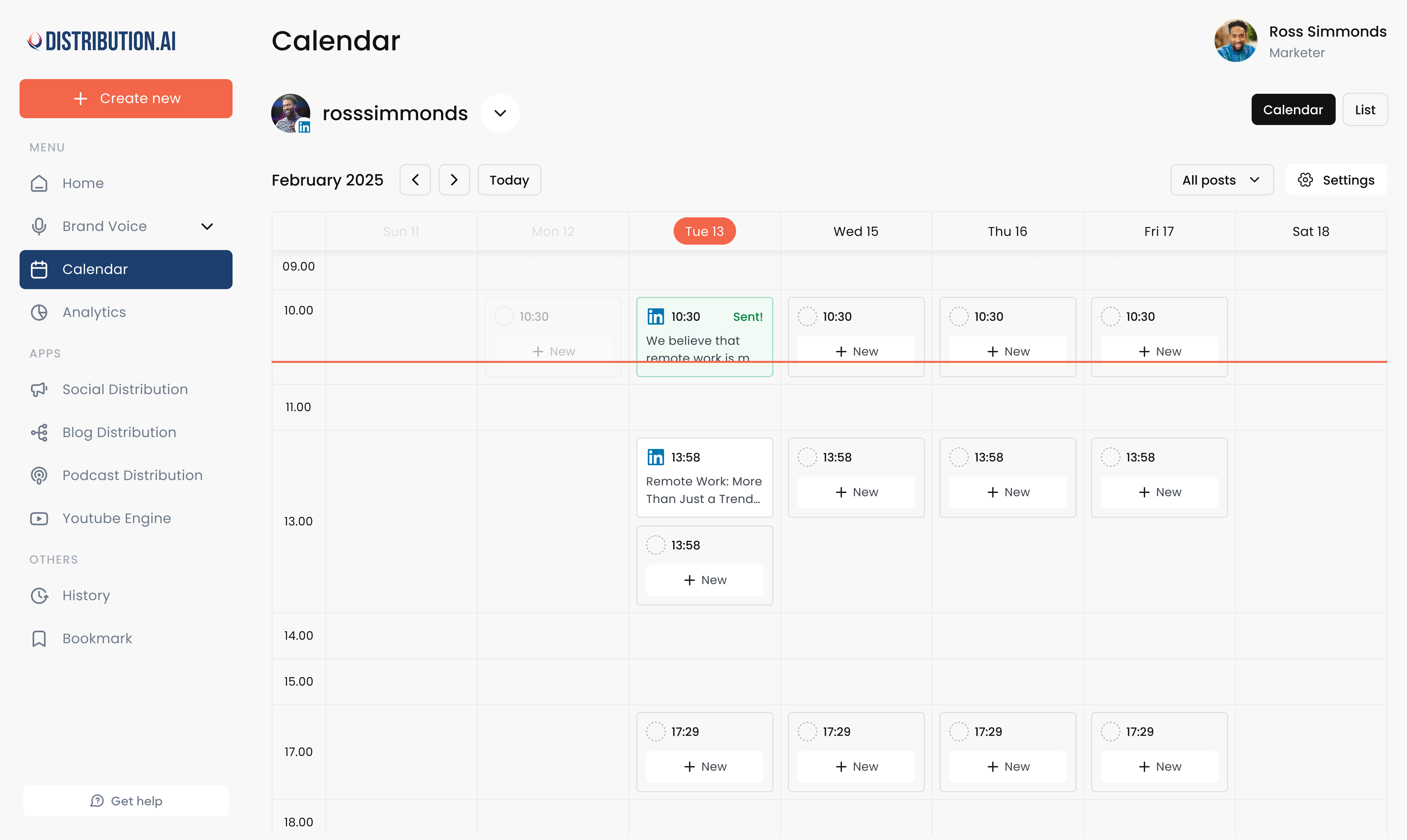
An always-on strategy helps keep your account active. Even when you’re offline, your content works for you.
Optimize Your Twitter Marketing with the Right AI Tools
Getting your timing right is half the job.
Making sure your content shows up consistently and performs well across different time zones, that’s where a platform like Distribution AI steps in.
How does Distribution AI help you?
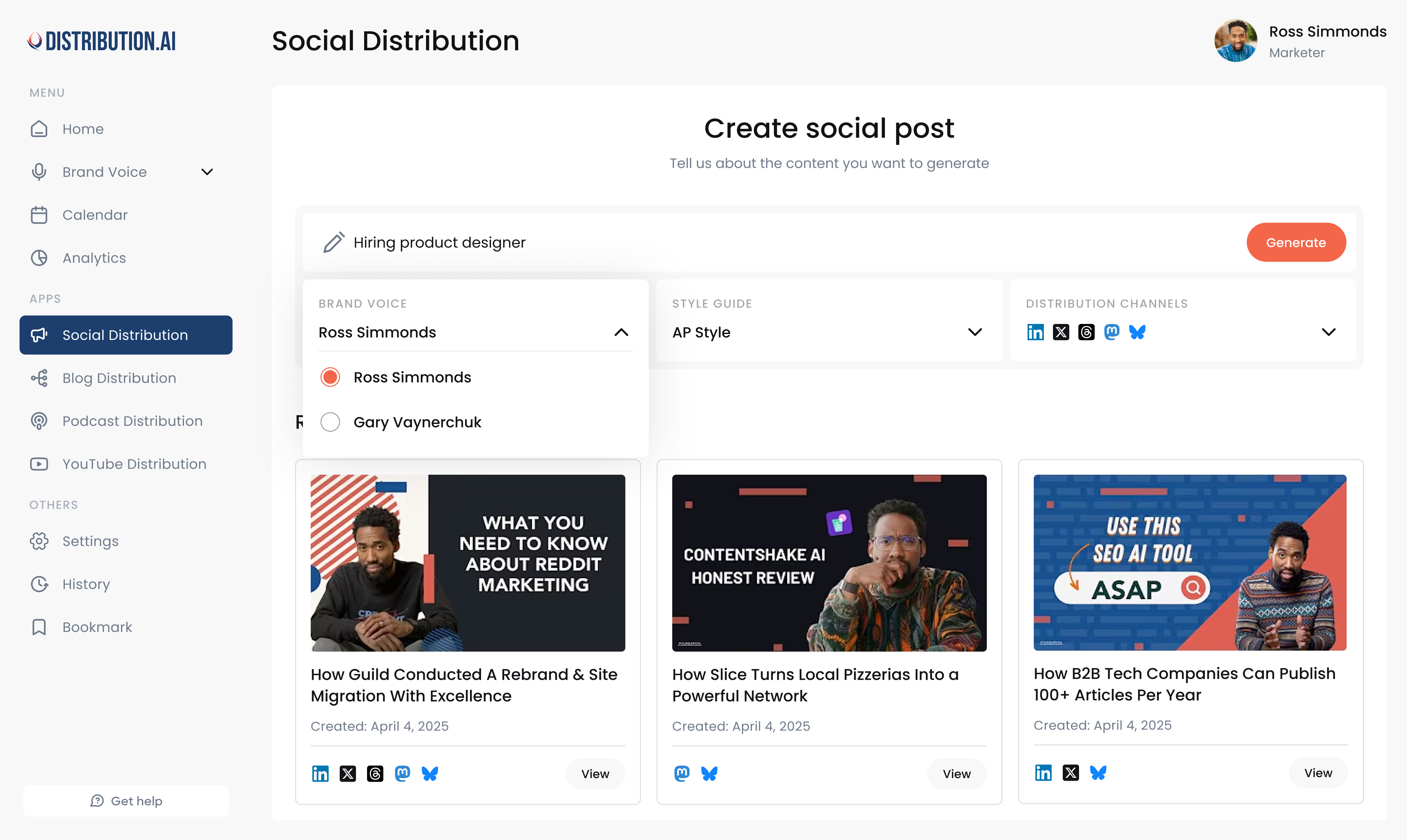
1. Turn existing content into Twitter-ready posts
Paste in a blog, newsletter, or video. Distribution AI pulls out key points and turns them into threads or tweets that match your tone and fit the platform.
2. Schedule posts when your audience is most active
The AI tool automatically schedules posts when they are likely to get more impressions, replies, and shares.
3. Keep your Twitter feed active without repeating yourself
You can create multiple variations of a post and schedule them to go out across different time zones. This helps you stay visible to a wider audience without spamming followers.
4. Stay consistent without needing daily check-ins
Once your content is in the system, distribution.ai handles the scheduling. Your feed stays fresh even when you’re not actively posting.
Timing and consistency are what the Twitter (X) algorithm responds to. Distribution AI helps you cover both without stretching your team thin.
It saves you from guesswork, automates the parts that take up the most time, and helps you get more out of every piece of content you publish.
Some additional tips to achieve maximum engagement:
- Spend 5–10 minutes replying to others in your niche. Engaging before posting helps jumpstart visibility.
- Instead of just retweeting, seed replies on a few relevant posts to draw attention back to your handle to increase discoverability.
- Repurpose top threads into short posts in a staggered schedule so you test timing without creating new assets.
Key Takeaways for Better Twitter Engagement
The best time to post on Twitter is not just about hitting the right time slots.
You need to understand when your specific audience is most likely to engage with your content.
Start with the general guidelines we’ve covered. Tuesday through Thursday, between 9 AM and 2 PM works for most industries. Make adjustments based on your target audience and time zone distribution.
Remember that these optimal posting times are just the starting point. Use Twitter Analytics to track your own engagement rates and identify patterns specific to your audience. Test different time slots, monitor which types of content perform best at different times, and adjust your posting schedule accordingly.
The Twitter algorithm rewards consistent, well-timed posts that generate early engagement. Combine strategic timing with quality content and the right management tools. You’ll see your engagement rates improve and your reach expand naturally.
Frequently Asked Questions
Promote, repurpose & distribute your content with AI
Start 15-Day Free Trial